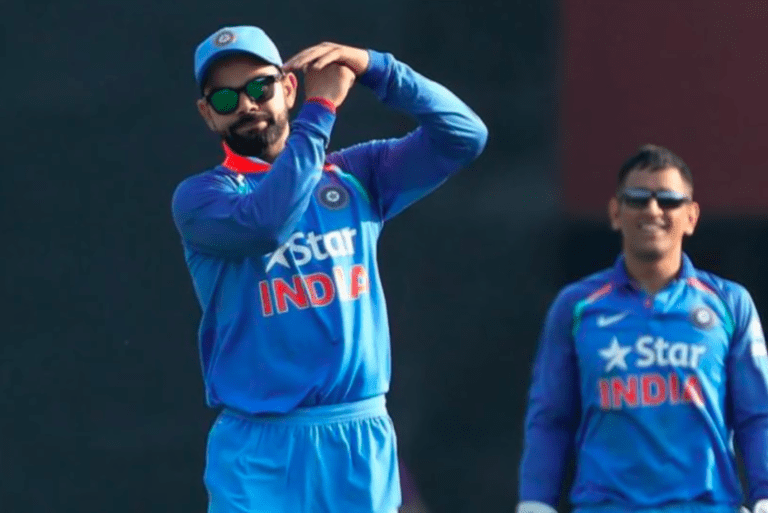No Ball in Cricket Unveiled: Rules, Types, And Impact On The Game
No-ball cricket is an intriguing aspect of the game that often leaves spectators and even players perplexed. Understanding the rules and types of no-balls is essential for both players and enthusiasts.
In this comprehensive guide, we delve into the world of no-ball cricket, exploring its rules, different types, and the impact it has on the game.
What is a No Ball in Cricket?
In the world of cricket, a “no ball in cricket” refers to an illegal delivery by the bowler. This means that the bowler has committed a technical infraction while delivering the ball, resulting in a penalty for their team. Understanding what constitutes a no-ball is crucial for players, umpires, and fans alike.
A no-ball is defined as a delivery that does not conform to the specific regulations set by the International Cricket Council (ICC) and the official cricket rulebook. These regulations are put in place to ensure fairness and maintain the integrity of the game.
When a bowler commits a no-ball, it is considered a breach of these rules and can have consequences for both the bowling and batting teams.
The specific reasons for a no-ball can vary.
It could be due to the bowler overstepping the popping crease, which is the front line marking the boundary of the bowler’s delivery stride.
Other reasons include the ball being bowled above the waist height of the batsman without touching their bat or body. Additionally, they include the ball bouncing more than once before reaching the batsman.
Types of No Ball in Cricket
When it comes to no ball in cricket, there are several distinct types that players and fans should be familiar with.
Let’s explore these different types, providing clear definitions and explanations for each:
1. Front Foot No Ball:
A front foot no ball occurs when the bowler fails to keep their front foot behind the popping crease while delivering the ball.
Impact: This type of no ball in cricket is determined by the position of the bowler’s front foot, which should not cross or land on the crease line.
2. Height No Ball:
A height no ball in cricket is called when the ball crosses the waist height of the batsman without touching their bat or body.
Impact: This rule ensures the safety of the batsman, preventing bowlers from deliberately aiming for the batsman’s upper body and head.
3. Waist Height No Ball:
A waist height no ball occurs when the ball reaches or crosses the waist height of the batsman.
Impact: It ensures that bowlers do not intentionally deliver the ball at an uncomfortable height for the batsman, maintaining fairness and safety.
4. Bouncer No Ball:
A bouncer no ball in cricket is characterized by a delivery that bounces more than once before reaching the batsman.
Impact: This rule prevents bowlers from excessively intimidating or endangering the batsman by delivering consecutive bouncers.
In addition to the aforementioned types, various other types of no-balls can be called based on specific cricket rules and situations. These can include back foot no balls, fielding restriction no balls, and deliberate front foot no balls.
5. When a Bowler Disturbs the Stumps During Delivery
In the early 2010s, the International Cricket Council (ICC) introduced a new rule to international cricket. It refers to situations where a bowling player touches the wicket while serving the ball. According to Law 21.6, the umpire may declare the absence of the ball if a bowler disturbs the wickets after the ball enters play, but before completing his bowling move, provided that the non-striker is not dismissed.
It is important to note that such a pitch is considered “no ball” only if it does not lead to the batter running out at the end of the game without a striker.
Understanding the Difference between a Wide and a No Ball in Cricket
It is crucial to differentiate between a wide ball and a no-ball in cricket. While both result in an extra run for the batting team, they have distinct characteristics and rules.
A wide refers to a delivery that is beyond the reach of the batsman and is determined by the position of the ball to the batsman’s stance.
On the other hand, a no-ball is primarily related to the bowler’s delivery, taking into account factors such as foot placement and ball height.

Impact on the Game of No Ball In Cricket
No ball calls in cricket can have significant implications for both the batting and fielding teams.
For the batting team, a no-ball offers an opportunity to score additional runs without any risk of dismissal. It also provides the batsman with a chance to gain confidence and momentum.
For the fielding team, a no-ball represents a missed opportunity and can result in extra pressure and frustration.
How No Ball in Cricket is Judged
The judgment of no ball in cricket plays a vital role in maintaining fair play. These judgments help with adherence to the rules. Let’s delve into the process of judging a no-ball, the responsibilities of the umpires, and the role of technology in decision-making.
The process of judging a no-ball begins with the on-field umpire closely monitoring the bowler’s delivery. The umpire keeps a keen eye on the bowler’s foot placement, making sure they do not overstep the popping crease. They also observe the trajectory of the ball to determine if it exceeds the specified height limits.
The on-field umpires assess the front foot no balls by observing the bowler’s foot placement. This helps in determining if it remains behind the popping crease during the delivery stride. They also keep an eye on the height of the ball, ensuring it remains within the permissible limits.
The Use of Technology in Decision-Making
With the advancements in technology, cricket has incorporated various tools to aid umpires in decision-making. These include the use of the third umpire and TV replays.
The third umpire, seated in the television replay booth, assists the on-field umpires in making accurate decisions. In the case of contentious no-balls, the third umpire can review the footage captured by the television cameras. They can provide conclusive evidence to the on-field umpire regarding front foot no balls or other types.
TV replays play a crucial role in reviewing no balls, especially those related to height or waist height. Slow-motion replays and various camera angles help determine if the ball has crossed the stipulated heights or breached the waist limit.
These technological advancements aid in reducing human error and ensuring more accurate judgments of no balls.
Conclusion
Understanding the rules and types of no balls in cricket is vital for both players and fans. It allows us to appreciate the nuances of the game and follow the action with greater clarity. The impact of a no-ball on the game cannot be underestimated. It often leads to strategic shifts and moments of excitement.
So, the next time you witness a no-ball being called, take a moment to appreciate the intricacies of this fascinating aspect of cricket.
Remember, a comprehensive understanding of the rules, types, and impact of no balls in cricket adds to the overall enjoyment and engagement with the game. Stay informed, follow the matches closely, and appreciate the strategic battles that unfold on the cricket field.



